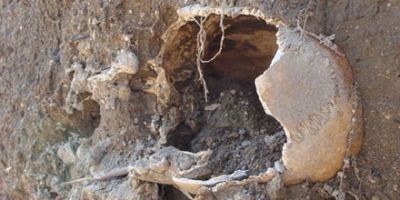UOT 327; 339.9
DOI:10.30546/3006-0346.2024.2.80.101
ТРАГЕДИЯ УРМИИ (1917-1918) – ДРАМА ЧЕЛОВЕЧЕСТВА
ИРАДА НУРИЕВА
Доктор политических наук,
профессор кафедры «Гуманитарных наук»
Азербайджанского Государственного Университета
Нефти и Промышленности
Резюме
В 1917-1918 годах с целью создания армянского государства на территориях, населенных турецко-мусульманским населением и близких к Османской империи, в западном районе Южного Азербайджана - Урмии, Салмасе, Хое и других прилегающих районах, в результате геноцида, осуществленного христианской армией, организованной армянскими, айсорскими и оставшимися в Южном Азербайджане российскими вооруженными силами против азербайджанских тюрков, погибло 100 тысяч мирных жителей. Халил-паше, командующему Шестой армией Османского государства, было поручено предотвратить кровавую резню, учиненную армянами и айсорами в районе Урмии. После эвакуации российских войск из Ирана британцы планировали объединиться с армянами и айсорами в Урмии, а с другой стороны занять район Рашт на дороге Тегеран-Казвин, войти в порт Энзели на побережье Каспийского моря, а затем войти в Баку морем и объединиться с захватившими город армянами и контролировать бакинскую нефть. Объединенная христианская армия разграбила десятки городов и деревень в западном регионе Южного Азербайджана и подвергла мужчин, женщин, детей и стариков беспрецедентному в мире геноциду. В 1914-1918 годах человеческие потери составили около 200 тысяч человек.
Ключевые слова: Южный Азербайджан, трагедия Урмии, геноцид, объединенная армия армян, айсоров, англичан и русских, Халил-паша.
TRAGEDY OF URMIA (1917-1918) –
THE DRAMA OF HUMANITY
IRADA NURIYEVA
Doctor of Political sciences, professor
Azerbaijan State Oil and Industry University,
Azerbaijan
Summary
In 1917-1918, with the aim of creating an Armenian state in the territories inhabited by the Turkic-Muslim population and close to the Ottoman Empire, in the western region of South Azerbaijan - Urmia, Salmas, Khoy and other adjacent areas, as a result of genocide carried out by a Christian army organized by Armenian, Aysor and the Russian armed forces remaining in Southern Azerbaijan against the Azerbaijanian Turkic, killed 100 thousand civilians. Halil Pasha, commander of the 6th Army of the Ottoman State, was assigned to prevent the bloody massacres committed by Armenians and Aysors in the Urmia region. After the evacuation of the Russian troops from Iran, the British planned to unite with the Armenians and Aysors in Urmia, and on the other hand, occupy the Rasht region on the Tehran-Qazvin road, enter the port of Anzali on the coast of the Caspian Sea, and then enter Baku by sea, and unite with the Armenians who capture the city and control Baku's oil. After the evacuation of the Russian troops from Iran, the British planned to unite with the Armenians and Aysors in Urmia, and on the other hand, occupy the Rasht region on the Tehran-Qazvin road, enter the port of Anzali on the coast of the Caspian Sea, and then enter Baku by sea and unite with the Armenians who captured the city, then planned to control Baku oil. The united Christian army looted dozens of towns and villages in the western region of South Azerbaijan and subjected men, women, children and the elderly to an unprecedented genocide in the world. In 1914-1918, the loss of life was about 200 thousand people.
Keywords: Southern Azerbaijan, the tragedy of Urmia, genocide, the united army of Armenians, Aysors, British and Russians, Khalil Pasha.




